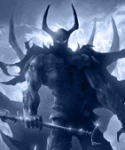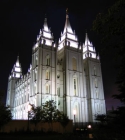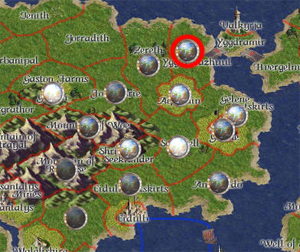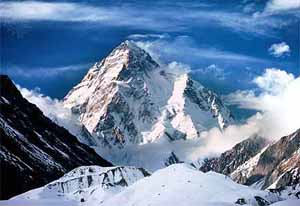Difference between revisions of "Torenism"
m (Replacing Lestat with Luna) |
m (→Holy Text) |
||
| Line 38: | Line 38: | ||
==Holy Text== | ==Holy Text== | ||
| − | [[image: | + | [[image:DivineTestamentofBlood.JPG|300px|thumb|left|The Torenist holy book - the '''[[Torenism/Divine Testament of Blood|Divine Testament of Blood]]''' on display in the [[Torenism/Cathedral of Tor|Cathedral of Tor]], in the holy city of '''Valkyrja'''.]] |
The '''[[Torenism/Divine Testament of Blood|Divine Testament of Blood]]''' is the holy book of the Torenist religion - and in actuality is a comprehensive volume of '''''three''''' testaments held holy by followers of Tor. The testaments themselves are a collection of several ecumenical books drawn from a number of time periods, and are a mixture of historical records, personal accounts of important holy figures, and abstract prophecies given to men and women of faith. | The '''[[Torenism/Divine Testament of Blood|Divine Testament of Blood]]''' is the holy book of the Torenist religion - and in actuality is a comprehensive volume of '''''three''''' testaments held holy by followers of Tor. The testaments themselves are a collection of several ecumenical books drawn from a number of time periods, and are a mixture of historical records, personal accounts of important holy figures, and abstract prophecies given to men and women of faith. | ||
Revision as of 01:23, 20 March 2008
|
This page uses present-tense language to describe one or more realms, people, events, features, or other items of game-related content that do not yet exist, and may never exist, at least in the form described. It is, at present, a work of fiction written with the hope that it will become true. |
The religion of Torenism was founded in the holy city of Valkyrja in the realm of Everguard in the late winter of 2008 by the Messiah of Tor, Luna Dawnstar. The church itself is run by the Pontifex Primus of Torenism, the defender of the faith Fisc Arylon. The faithful are referred to as "Torenists", and their numbers have grown at a rapid pace since the founding of this noble religion.
Adherents of Tor look to the Divine Testament of Blood for guidance in their lives - for it is their holy text containing the word of their god. The main temple of Torenism, central to the people of Faith is the Cathedral of Tor in the holy city, constructed at the very dawn of the religion. The adherents to the faith are some of the most unwaivering and pious believers of any religion in the world, and the influence of Torenism is greater than any religion on the continent of Dwilight.
Contents
- 1 The Nature of Tor
- 2 The Founding of Torenism
- 3 Holy Text
- 4 Theology
- 5 Ritual and Ceremony
- 6 Organization of the Church
- 7 Religious Structures
The Nature of Tor
Tor is the supreme ruler of the known universe, and it was he who gave birth to our world and is responsible for the nature of man. Tor is totally beyond the comprehension of imperfect beings such as humans, and as such none - not even Tor's prophets - should believe that they can truly know what Tor is. However, some details are known. Tor is eternal. He has existed since before the beginning of time, in an existence outside our own. He has always been, and will always be. A famous saying of Torenists is likely the most accurate description of Tor – “In the beginning, there was only Tor... and the beginning has a lot in common with the end."
The Founding of Torenism
The belief in Tor has existed for centuries, but it was only recently that an organized religion devoted wholly to Tor was organized. In the golden age of the South-East Island, the citizens of the nation of Toren were militant believers in Tor and devoted their entire existence to attempting to honor the name of the god they believed in - but even they never set up an organized church in the name of Tor.
The actual organized religion of Torenism was not formally organized until the revelation of Tor was witnessed by the Messiah - Luna Dawnstar. It was then that priests began to preach the word of Tor, build temples and shrines in his name and organize themselves under the influence of a ecumenical hierarchy. The Divine Testament of Blood was assembled from historical records of Tor, and the Accounts of the Prophets regarding his nature and will, and peasants began to convert to the religion in droves.
A church hierarchy then developed over time, and what is the incarnation of the church today is the result of the development of the religion over time since the appearance of the Messiah.
Holy Text
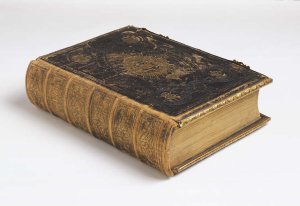
The Divine Testament of Blood is the holy book of the Torenist religion - and in actuality is a comprehensive volume of three testaments held holy by followers of Tor. The testaments themselves are a collection of several ecumenical books drawn from a number of time periods, and are a mixture of historical records, personal accounts of important holy figures, and abstract prophecies given to men and women of faith.
The entire testament was brought together by the First Council of Valkyrja, which was a gathering of the holy leadership of Torenism that met to decide upon what the canonical beliefs of the religion, establish a unified holy book and set up a permanent church hierarchy to administer the faithful of Tor.
The First Testament of Tor
- The Book of Genesis - The Torenist belief regarding the creation of the world, and mankind
- The Chronicles of Man - The description of early tribal man, and their peaceful primitive societies
- The Book of Chaos - A series of stories giving account of Tor's interference in the world of man in the early world
- The Book of Ascension - A number of depictions of how society and technology advanced as a result of conflict
- The Book of War - Letters from an ancient tribal King extolling the virtues of honorable conflict among tribes
The Second Testament of Tor
- The Book of Revelation - The account of when Tor first revealed himself to man on what is now known as the war island
- Account of the Prophet Phear - The personal witness of the prophet Phear, including prophecy and interaction with Tor
- Account of the Prophet Averyll - The personal witness of the prophet Averyll, including prophecy and interaction with Tor
- Account of the Prophet Fisc - The personal witness of the prophet Fisc, including prophecy and interaction with Tor
- Account of the Messiah - The writings of the Messiah, Luna Dawnstar, regarding the revelations of Tor to him on the Mountain of Betrayal
The Third Testament of Tor
- The Book of Torenism - Describes the authority of the church, and the infallibility of the Avatar of Tor
- The Book of Holy Land - Describes the sacredness of certain locations in the world
- The Book of Prophecy - A collection of prophecies of as of yet unfulfilled events made by various prophets and holy men
- The Book of the Dead - An account of what awaits human souls after they die
- The Book of Armageddon - The specific prophecy about the nature of the end of history
Theology
The Theology of Torenism is the collected set of beliefs that make up the essence of what it is to be a Torenist. The purveying philosophy of the religion is that of a people devoted to a cavalier lifestyle, a rough warrior culture, fierce adherence to an honor code and belief in the god Tor and his directives to mankind.
Creation
In the void before existence, there was only Tor. An omnipotent being of limitless power, Tor was isolated and alone - he wished to create an existence made in his own image, with beings that contained shards of his own spirit holding dominion over the world. And so it happened, Tor poured all of his being into the creation of a world of great significance, containing large island continents of land, fierce beasts and impressive landscapes.
On this world, Tor created man. He instilled the people he molded with sparks of his own essence, what Torenists today call the living will of Tor, and gave them the ability to tame the land, sea and animals of the world, to establish their dominant control.
But Tor did not simply create human beings for the sake of creation. He wished to see the race of men develop from the lowly tribal bands of hunters into noble and fearsome beings, dangerous and powerful. He wished the weak to perish and the strong to prosper. He wished the defenseless to be slaughtered and the powerful to dominate.
And so in the early form of the world, Tor did meddle in the affairs of men. He would encourage war, destruction and chaos - because in so doing, those humans who were weak, foolish or stupid would be targeted and destroyed, and those who were left standing would be strong, wise and intelligent. Tor saw that doing this advanced human civilization - facing hardship, war and conflict promoted technological advancement, philosophical progress, the formation of strong and efficient governments and the evolution of all mankind from a period of darkness into that of noble spirit and achievement.
Tor's Prophet on Earth
Up to that point Tor had not revealed himself to the people of the world. He had manipulated them, tricked them and guided them, but all without any of them knowing of Tor. As time passed, the people of the world began to create pagan religions devoted to any number of things - elements they saw in the world, celestial objects, climate seasons, and even completely fabricated gods. Tor was offended, and wished to announce his existence to mankind and give them directives to follow. It was not simply out of vanity that Tor did decide this, he had grown tired meddling in the affairs of men. He wished to give them a legacy and code to live by, so that they themselves could promote anarchy, war and destruction as a means to promote growth and evolution. It was then that he decided to speak directly to man.
And so did Tor travel in body and spirit to the earth and come to the South-East Island. It was there that he found a great consolidation war was coming to a close - a great nation called Sandalak was in control of more than 3/4 of the island, with a beaten and nearly destroyed Taselak on the verge of total collapse. Tor saw this and knew that soon this continent would be consolidated under one flag, and once that happened war would disappear and the men of South-East would lose their spirit and will to advance themselves.
Tor then brought upon South-East a great number of disasters - earthquakes, floods, plagues and hordes of monsters. Hundreds of thousands of peasants were slaughtered, and the nobles who were able to survive were forced to flee to the only safe locations that Tor spared - the four great cities, Ikalak City, Taselak City, Sandalak City and Toren Stronghold. The remnants of the old realms were now annihilated, and after the great destruction of South-East had concluded nothing but broken people remained in depopulated cities.
Then Tor did reveal himself. Recording the First Directive of Tor onto a scroll, he left it on the outskirts of Toren Stronghold for it to be found by a young noble of the population residing inside the city. His message to those citizens, broken and scared, was as follows:
- Tor's people - You are the land's enlightened. Fight for me! All shall be blessed. You will be lead by a Pontifex who will guide you in spiritual matters. Worship me, and victory shall be yours for all of eternity - spurn me, and you shall see nothing but defeat.
The words struck a cord with the people of Toren Stronghold - they were a beaten people looking for salvation and answers. In that simple statement, they found meaning, purpose and strength. They rallied around the concept of a powerful deity who had deemed them his chosen people. In reality, Tor did not consider the people of Toren any more or less worthy of his name - he simply realized that they were the most likely to accept him and fight in his name.
But this simple revelation of Tor was not enough - Tor wished to impart his philosophy to the world of men and needed a vehicle to do that, he needed a prophet. He saw that the people of Toren had organized themselves as a religious theocracy dedicated to him, and so he decided to commune with their leader, the noble Phear Phantom. He spoke to Phear in his dreams and commanded him to travel alone to the highest peak of Toren Stronghold and receive his word.
The Initial Directives of Tor
It was there that Tor revealed the central tenets of what would eventually become the Torenist faith. He spoke of the virtues of honorable conflict, the nobility of strength and the indignity of weakness. He outlined the evil effect that peace and complacency have on the human heart, and outlined the cowardice of diplomacy and talk. He then commanded Phear to obey these tenets and enforce them upon all followers he controlled. Phear would later organize all the religious and moral imperatives given to him by Tor, and codify them into Toren law - even going so far as to record them on a great parchment which still survives to this day, and is known as the collected Directives of Toren Mountain.
After revealing these commandments, Tor revealed to his prophet the nature of early mankind, and how he had interfered in the world of men and encouraged war on each of the continents of the world - developing the human world in the process. He also told Phear how he punished the damned souls of cowards and traitors by twisting their essence and sending them back to earth in the form of monsters and undead, as a way to encourage conflict in the world of men if the human nations became too peaceful. Tor spoke of these events to prove to Phear that those philosophies had lead to rapid development of human society - a great deal more than would have been possible otherwise.
After he had given Phear these directives, he told him that he would periodically commune with him when the situation required it - and that if he were to perish, he would do the same with any who took his place. He then commanded Phear to go from his presence, follow his directives, and preserve them for all time. Phear's accounts his experiences with Tor were recorded in his personal writings, and would later become the seventh book in the Divine Testament of Blood, known as the Account of the Prophet Phear.
Phear descended from Toren Stronghold a completely changed man.
Man's Fall from Grace
The overthrow of the holy Pontifex and rejection of religious rule of law
The Destruction of South-East
Upon approaching the jagged mountains of the ancient city of Toren Stronghold after a failed campaign into Ikalak City, Fisc Arylon noticed a luminous glow coming from the Cave of Guilt - something he had never seen before in the thousands of times he had passed the region. The High Marshal of Toren ordered his men to remain behind, and he entered the mysterious cave to investigate what he had seen.
It was there that for the first time since the overthrow of Pontifex Averyll Arete, Tor communicated with man. Fisc and two of his captains witnessed him, as he spoke a prophecy regarding the fate of the south-east island. The essence of Tor revealed that the continent would be destroyed, and all people remaining on the island would be killed. He spoke angrily, expressing his revulsion at the petty bickering, politicking, diplomacy and lack of action from warriors that had supposedly dedicated their lives to honorable conflict in his name. He expressed contempt for the secular Toren government, and a desire for it to be wiped out. Additionally, he spoke of man's last opportunity for redemption in his eyes - blindly setting off from the island to a continent thousands of miles across the great sea known as Dwilight.
Deeply effected by this revelation, Fisc brought this prophecy back to the people of Toren, telling them of their impending doom and asking them to accompany him to Dwilight in hopes of starting a new life there. As the days crept by, Fisc heard word that similar experiences had been seen in isolated corners of both Taselak and Ikalak - Tor had revealed himself to more than just Toren.
Those that accepted the death of all that they had known began to prepare to leave. Nobles from Toren, Taselak and Ikalak boarded ships departing for other lands, several of whom felt a call to travel to the new world - Tor had said that salvation and redemption was possible there. Once the south-east refugees arrived on the shores of Dwilight, they banded together in common cause to form the realm of Everguard and begin life anew.
Redemption in the New World
The Messiah of Tor
In the dead of winter in the early days of the realm of Everguard, the Duke of the capital city of Valkyrja, Luna Dawnstar was struggling with coming to terms with his previous beliefs of the folly of belief in Tor, and the knowledge that it was a supernatural force that boomed from the heavens that doomed the island he had formerly called home. He had heard the accounts of the experiences Fisc and the others had in the mountains and caves of South-East, but still had a great deal of doubt swimming in his head regarding the truth of what happened to his home as he fled the sinking island. Part of him still had questions that he could not answer.
Late at night while sleeping, Lestat was visited in a dream and touched by Tor. A black veiled being of some kind spoke to him, and directed him to travel to the west and go to the great mountain ranges spoken about by the local peasantry. He was then to seek out the highest peak of the range - something known as the Mountain of Betrayal, where he would commune with the god Tor and receive the answers he so desperately sought after. Dishonor and betrayal was what men brought to Tor's name in the past, and the being in Lestat's dream made it clear mankind would have to do penance for those past sins, and they would so so at the aptly named mountain.
Lestat then set off on a journey in line with what was directed to him by the essence in his dream. He spent the next several weeks hiking to the mountain range in the central portion of northern Dwilight, seeking out the highest peak he could find. He arrived at the Mountain of Betrayal and climbed, despite the harshest of conditions, to the peak. By the time he reached the highest point, he had run out of food, water and was certain he was close to death.
It was there that Tor revealed himself to Lestat. As he lay nearly dead from exposure to the elements a black essence consumed him. The booming voice of an angry Tor pierced every inch of his body and commanded him to obey. Tor began to test Lestat in a number of ways, things no one but the Messiah himself knows were asked of him. The trials lasted for days, and when they were done, the god had chosen a man to carry out his will on the earthly plane, and began to give him directives to follow.
He was told to return to Valkyrja and preach the word of Tor and found a church in his name to spread the faith beyond those who had witnessed Tor's wrath in the past. He declared the holy obligations of the faithful and deemed the city of Valkyrja as the holiest of cities on the continent, and the Mountain of Betrayal the site of communion between man and the spirit of Tor. He commanded Lestat to teach the directives of Tor to all mankind, and bring honor and justice back to the wicked race of men.
After the experience Lestat had on the peak, he then hiked several miles to the west and come to the great mountain Lake of Blood. There he sought water and perhaps some food, and in so doing he actually fractured a section of the ice in the lake, and was swallowed whole by it, plunging him into sub-zero temperature water. Through faith in Tor, he was able to survive.
Once he arrived at the base of the mountain, Lestat began to feel the pain of a deep laceration to his left shoulder muscle. He removed his coverings and revealed that a bloody wound was present on his arm - it was two cuts, sliced in a stylistic shape of what looked to him like a mountain. Lestat dubbed this the mark of Tor. He then traveled to the now holy city of Valkyrja and officially founded the religion of Torenism.
Connection to the Mountains
Those in communion with Tor travel to the peaks of mountains to receive divine phrophecy and wisdom
Death, Judgement by Tor and Paradise
Torenist beliefs regarding death and the afterlife were recorded in a series of scrolls collectively referred to as the Book of Honor. Doctrine states that those who die with purpose and honor are said to join Tor, in what is known to the faithful as The Emerald Fields, a sacred paradise where battle and feasting can eternally be shared and won.
The honored dead are not mourned, but celebrated. The body of the dead warrior is viewed mainly as an empty shell to be disposed of, albeit with respect and reverence. Dead warriors who are considered heroes and righteous soldiers of Tor are traditionally paraded through the streets of the holy city, then burned in a great festival celebrating his name and battles.
The Void is the Torenist afterlife where the dishonored go when they die. It is guarded by the brother of Tor, known only as Rayden. Those unfortunate warriors who find themselves in the void are faced with eternal torture by Rayden and his demons; however, Torenist doctrine from the book of honor allows for souls to be saved from the void, usually by heroic sacrifices performed by friends and family in his or her name.
If a warrior dies and is fated to journey to the void, they will find themselves on the Barge of the Dead, which travels the 'river of blood' on its way to the void. Souls on the Barge are tempted by siren-like voices, masquerading as friends and family, who try to lure them off the edge and into the river. What awaits them in the river of blood is a fate worse than the void.
What happens upon death - judgment by Tor for righteousness and entry into Paradise or damnation as a monster (this is the genesis of where monsters/undead come from)
Prophecies
Fulfilled Prophecy
All fulfilled prophecies of Tor
- Fall of Sandalak
- Revenge upon usurpers and betrayers
- Destruction of South East Island
Unfulfilled Prophecy
All unfulfilled prophecies of Tor
Ritual and Ceremony
Toren Mass
Torenism Mass is celebrated in a much different way than most religions conduct their masses.
The Creed
What is known to the faithful as The Seeklander Creed is an ecumenical Torenist statement of faith used by the laity of the church to declare their belief system to themselves, and to others It is recited during each Toren Mass Celebration, as well as all formal rites of passage for the religion. The text of the creed is as follows:
- We believe in Tor, the father of glory and war,
- creator and destroyer of our existence,
- and righteous source of strength for all mankind.
- Through Tor, the world was forged in blood and fire,
- for mankind and the salvation of our souls.
- We believe in the honor of conflict,
- the piety and of vengeance and justice,
- and the inherent cowardice of diplomacy and peace.
- Power flows through strength,
- and only those who are strong deserve to rule.
- We believe the sacred afterlife,
- of the communion between man and Tor.
- He sits in judgment of us all at the hour of our death,
- allowing only the honorable and strong to know his peace.
- We believe in the Holy Torenist Church,
- the glory of Tor's avatar on earth,
- and the divine application of church doctrine.
- We are Tor's children on earth,
- and no one can stand against us,
- in this life, or the next.
Torenism Birth Ceremony
Baptism by Blood
Torenism Union of Marriage
Torenism Death March
Pilgrimage
The Pilgrimage, also known to followers of Tor as The Journey is a religious pilgrimage to the tallest mountain on Dwilight, the Mountain of Betrayal. From the peak, it is said that pilgrims are able to look out upon the great ocean and see the last remnants of the South-East Island - the very peak of the mountains outside what was once Toren Stronghold.
The journey to the top of the Mountain of Betrayal is a holy obligation for members of the Torenist religion, and must be carried out once every ten years after a soldier has gone through the Baptism by Blood ceremony. Failure to do so is considered highly blasphemous and offensive to Tor, and can be grounds for excommunication from the church.
The pilgrimage itself is a demonstration of the solidarity of the Torenist people, and their acceptance and devote to Tor. It may be conducted only during a four week period surrounding the winter solstice, thus forcing the pilgrims to travel through the harshest and most dangerous conditions on the continent, and truly face their own mortality in deference to their god.
The Journey is meant to replicate the experience that the Messiah of Tor, Luna Dawnstar had when he was shown the path of Torenism on the Mountain of Betrayal. The experience is associated with the connection of Tor to the highest mountains and the strongest, roughest nobles who follow him. The pilgrimage itself is a solitary journey by individual members of the faith - no groups or processions of pilgrims are allowed. These hearty spirits hike to the highest peak of the Mountain of Betrayal and arrive at the very spot where Tor revealed himself to Lestat - where a giant obelisk made of pure obsidian now stands - and hold a vigil for seven consecutive days, beginning at sunrise and concluding at sundown. During this time, pilgrims are required to fast, and can not eat. This is designed as a test to turn away those who do not have strong hearts or faithful spirits, and the walk the same path that the great Messiah of Tor did.
After being tested on the peak, the pilgrim is then to hike several miles to the west and come to the great mountain Lake of Blood. There they are to cut a whole in the solid ice, and immerse themselves in the freezing water. This signifies their willingness to fully devote themselves to the idea of Tor, regardless of personal cost. After emerging from the lake of frozen water, they are to melt a bucket full of ice, and then drink it - a symbol of taking Tor into their bodies and making his will manifest in their spirit.
Once they recover, pilgrims are required to take a specially made blade and mark themselves as a man or woman of Tor. This consists of carving the simple shape of a mountain peak into the bicept of their left arm, in such a way that the wound will heal and create a permanent scar marking the pilgrim as a follower of Tor. The pilgrim will then shave his or her head and descend down the mountain to return to his realm.
Members of the Torenism religion are not considered confirmed in their faith until they have undergone this pilgrimage to the mountain. Nobles coming down the great cliffs, bald and scarred are routinely hailed and treated as kings as they make their way home. Peasants are in awe of any person who can complete this task, especially someone who may have done it multiple times.
Prayer and Worship
Organization of the Church
The positions and structure of the church
Religious Structures
Temples, shrines, etc
| http://wiki.battlemaster.org/images/TorMtn.png | The Torenism Religion | http://wiki.battlemaster.org/images/TorMtn.png | |
|---|---|---|---|
| The Faith | |||
|
The God Tor | Torenism | Holy Text | Theology | |||
| Ritual and Ceremonies | |||
|
Torenism Mass | The Creed | Birth Ceremony | Baptism by Blood | Union of Marriage | Death March | Pilgrimage |
|||
